What do you miss most about being outside? Maybe just meandering on the streets, rather than only being let out to shop. Being in our public spaces is the ultimate privilege, and for now, one we cannot claim. Just as goats overtook Llandudno, art and creativity have also crept in through the cracks in the brick work in our absence.
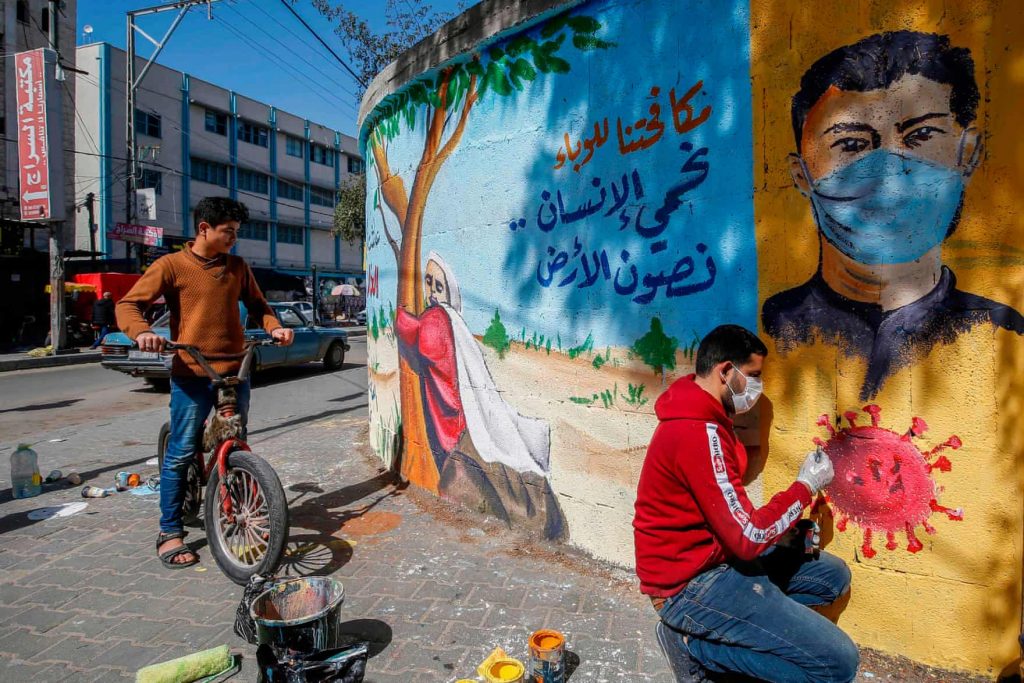
Messages etched in chalk on pavements to murals painted on boarded up store fronts have brought art to us through our screens; ‘wish you were here’ postcards from the outside world. In Leeds, curated street art project In Good Company has worked to diversify the city’s streets and in lockdown has taken over prime advertising space. Founded in June 2019 by British designer Laura Wellington, In Good Company has brought art and colour to the cities buildings. By working with property developers, local businesses and international artists Laura and partner James have created large scale works on Graphical House, with artist Mr Penfold and on a 100 year old narrow boat with Benjamin Craven and Jenny Beard.
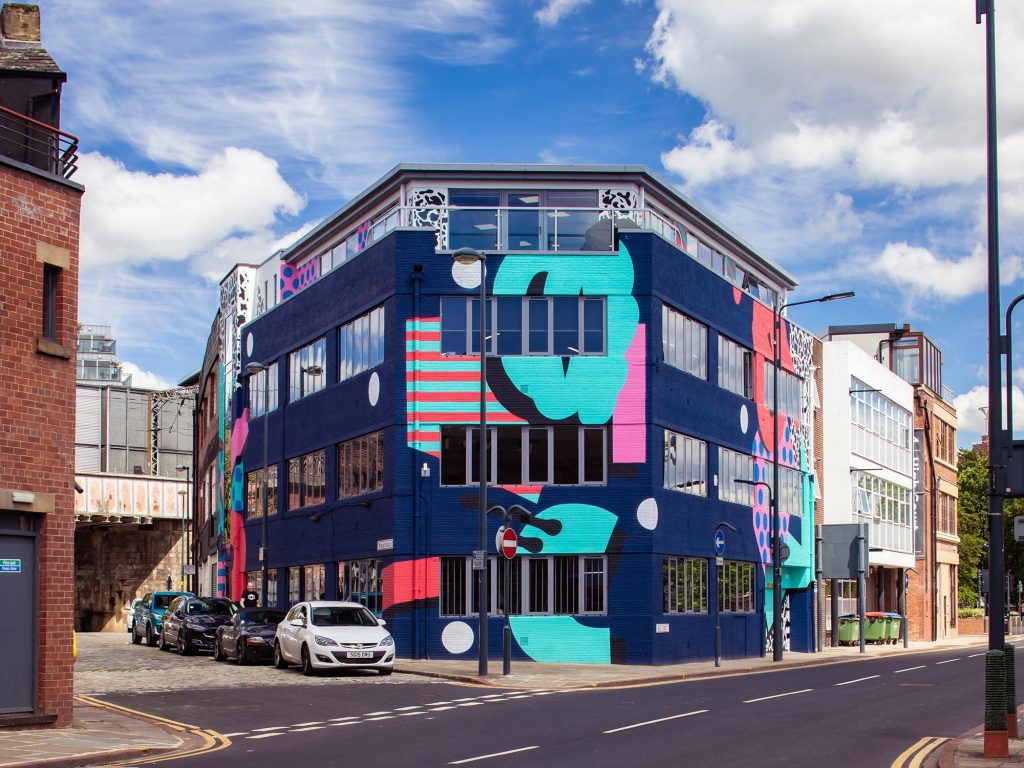
Lockdown has given their mission an entirely new iteration. A conversation with another independent business owner Tom of We Are FYI, an advertising company for the entertainment and hospitality industries, combined with their ownership of huge billboards on Hyde Park corner, a densely populated area of Leeds, Laura decided there was no better place for a thank you for key workers.
After approaching award winning artist Morag Myerscough, four billboards and a huge colourful sign shouting a message of gratitude to those on the frontline were turned around in just 72 hours. Inspired by the outpouring of support for the NHS, they are designed to include everyone. “There are a lot of people that have to keep going to work everyday and have no choice but to put themselves at risk. I set out to say thank you to everyone through art and colour”.
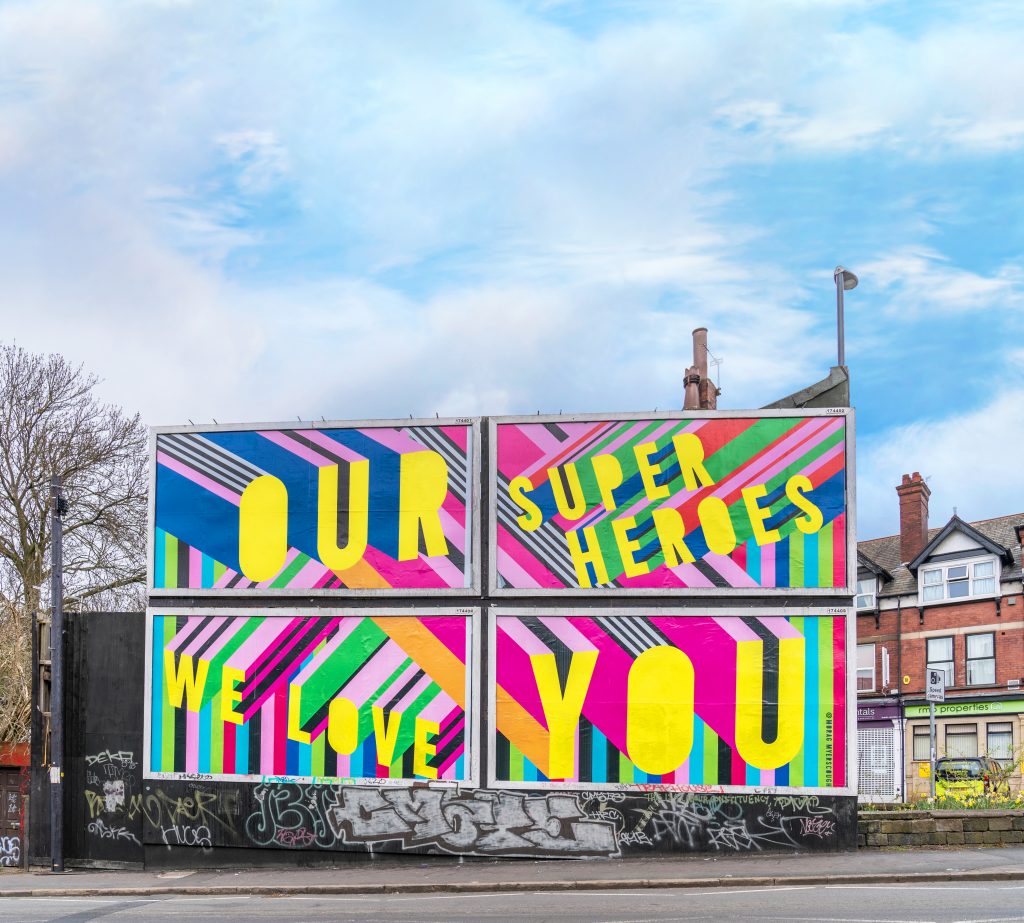
“The response initially was phenomenal and lots of people were asking how do they bring it to their city.” After spending a week pitching the idea to national billboard companies and garnering no support, the project took on a city centric approach to get the message out. “Posters for the People became a people powered approach to get the posters all over the world. It came out of adversity and I’ve enjoyed watching it grow through people.” The posters are available online for anyone to purchase, print and put up in their locality already reaching around the UK, Italy and the US.
By then partnering with Pop Art Media, who’s outside advertising is contracted by Leeds City Council, the campaign took over 150 poster sites in the city with art work from seven independent creators.
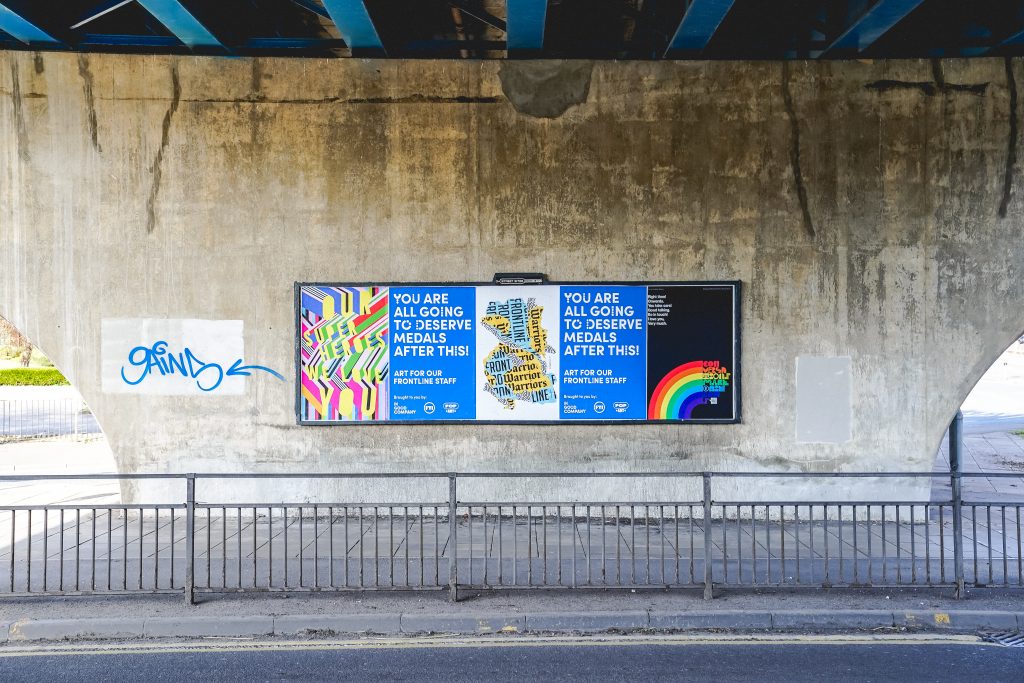
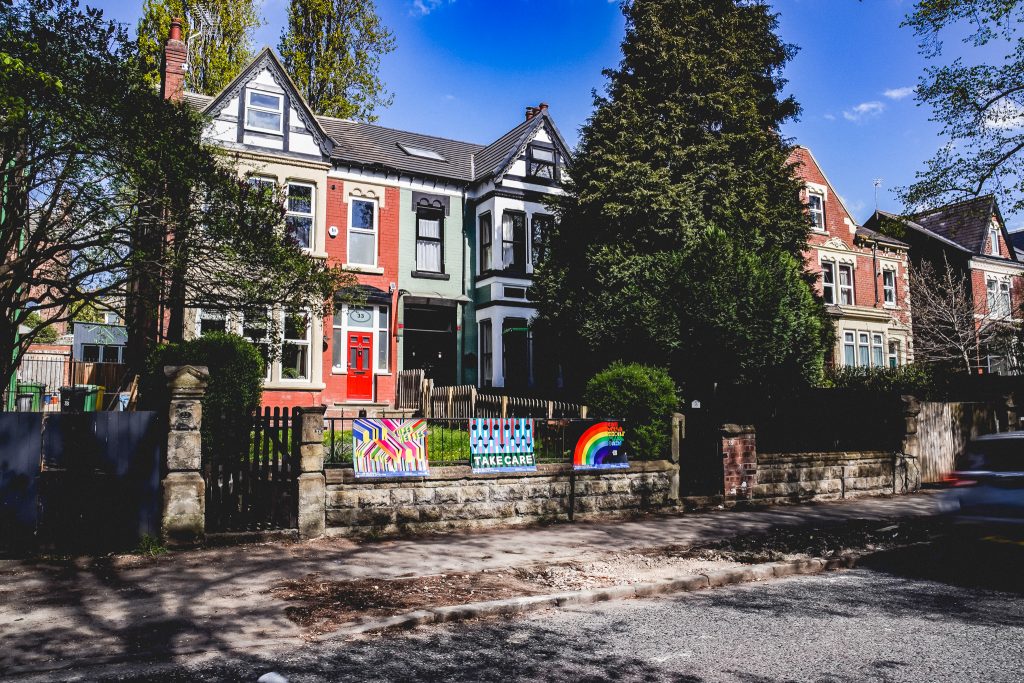
Where art belongs, seen but not heard in frames, private collections and galleries, has been relatively fixed, in comparison to advertising’s growth. For some, art in all its forms is the most freeing form of expression. For others it can be exclusive and exclusionary. In 2018, a BBC survey of 40% of UK secondary schools found that nine in every ten had cut back on staff time and resources for at least one creative arts subject due to funding pressures. It isn’t surprising then that by the time many young people enter adulthood, art can be characterised as a luxury not everyone can afford. Though young people and adults may come to encounter art later in life with free or subsidised admittance to some galleries and cultural venues, feeling like you don’t belong in a space is just as powerful a barrier as other inaccessibility practicalities.
A 2015 Warwick report showed that attendees to art galleries were overwhelmingly white and middle class. Additionally, a government survey from last year of over 8,000 people showed only 33% of black people and 43% of Asian people had even visited a gallery. This is not to say art galleries are systemically racist, but that evidently more must be done to reach certain communities.
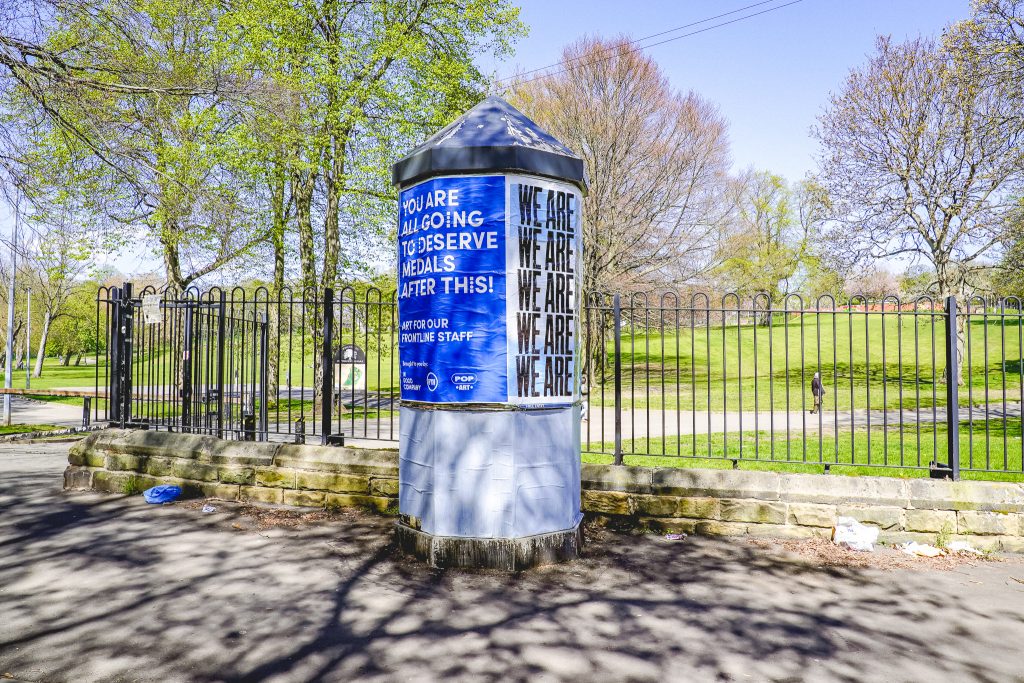
Art being outside has generally been understood as rebellion. Graffiti became synonymised with vandalism, with the use of tags on buildings demonstrating a visual fight to reclaim urban spaces. Banksy began turning the tide in the early 2000’s, creating beautifully subversive street art and social commentary with huge public appeal. People loved Banksy not because he was necessarily the best or the first, but because his work could be anywhere and by anyone, but most importantly, carried accessible and relatable visual messaging. Despite our cities being full of surfaces, art was vilified or squeezed onto street corners. The movement of full wall murals has only continued to grow ever since.
Advertising outdoors however has been completely ubiquitous with our environments for decades. When Laura approached Clear Channel, who own huge billboards all over Leeds, “they decided the billboards could not be used”. Even just the Leeds council website boasts opportunities to reach over 300,000 people a year. It seems no place is out of advertising’s reach, with “lampposts, recycling centres and green spaces such as flower beds” all up for grabs. If every surface is encouraging you to buy, is it any wonder we are overconsuming? There are also multiple studies, that more materialistic values are an indicator for lower levels of wellbeing. We feel worse about ourselves after constant exposure to consumer goods.
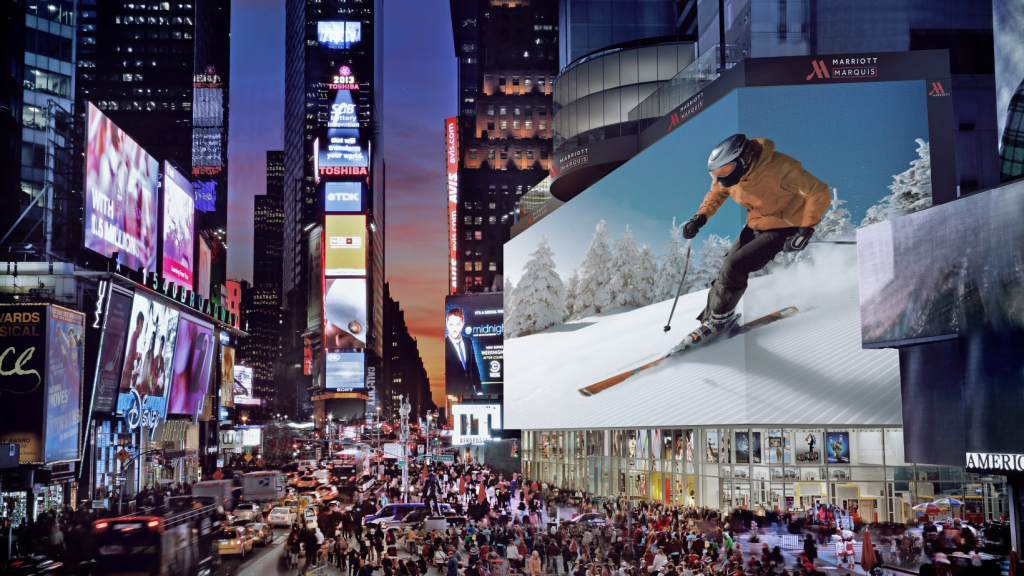
Advertising is not simply bad or evil. It’s a powerful informative medium to make you think, laugh and cry. In a four week campaign this February, Clear Channel created a campaign on digital ad boards across Leeds City Centre showing health warnings when temperatures dropped below 8 degrees. With over £260m cuts in funding in 10 years, it also brings a vital income stream to Leeds City Council. But this treats citizens, and in turn our city spaces as one-dimensional, powerful only through consumption. In Good Company’s work taking over sides of buildings and now huge billboards with curated art works asserts a bold right to public space. Involving developers and commercial interests in this movement shows tentative steps in an exciting direction towards art and creativity having a central role in the outside every-day.
Bringing art into the public goes back to its roots as a communication tool, whether as a portrait of a monarch, a graphic illustration or a huge message of thanks. “Graphic design and posters have played a key part in history and key messages, from Keep Calm and Carry on to female liberation in the 70s”. The poster and the protest sign as artforms, as shown by In Good Company’s people powered movement, is an example of accessible art that everyone can claim a piece of ownership within. Rather than being talked to by ads, we can talk to each other even when apart.
Creating an ArtNotAds movement could be the next step. It seems a bit of a ridiculous idea doesn’t it? With personalised Ad technology everywhere, billboards and posters might feel like a drop in the ocean. In 2007, then Mayor Gilberto Kassab of Sao Paulo, Brazil, enacted the Clean City Law removing all 15,000 billboards from the city, which continues to this day. Similarly, in 2015, the city of Tehran, Iran, replaced all advertisements with art on 1,500 billboards for 10 days.
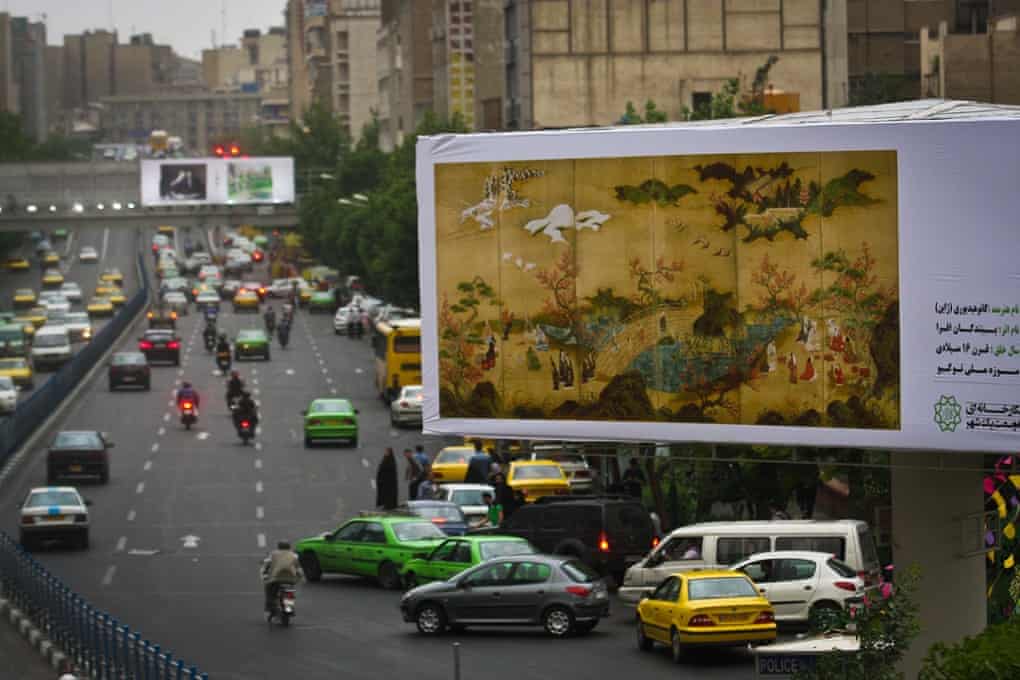
Either way, In Good Company’s project asks bold and colourful questions about not only access to art, but citizens rights to our public spaces, and shaping environments to serve public interests in our post-lockdown future.
And what of that future? Take comfort in Laura’s words: “we must disrupt, and go our own way.”


